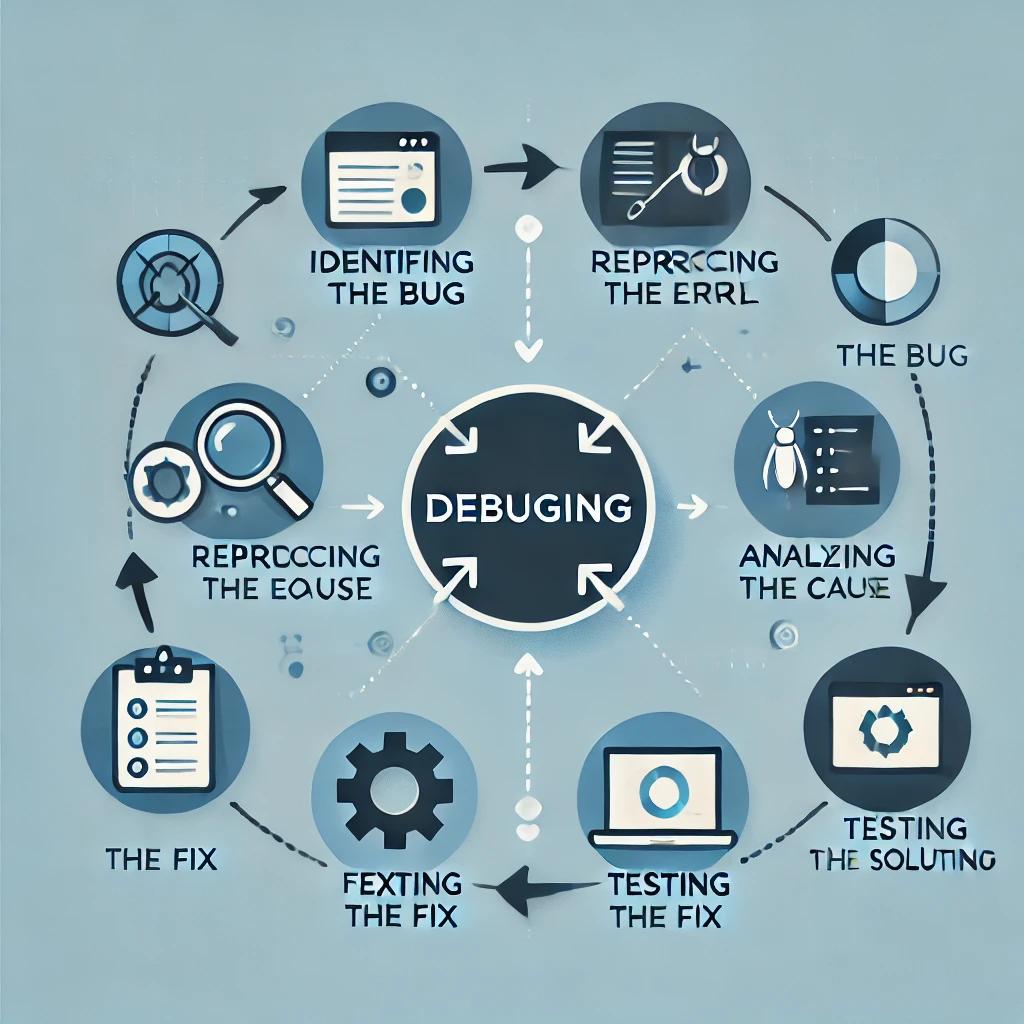Testing and Debugging: Testing and Correction
Testing and debugging are two essential practices in the software development cycle that ensure applications are functional, efficient, and error-free. Testing involves running various types of tests, such as unit tests, integration tests, and functional tests, to verify that each part of the system meets specified requirements. Debugging, on the other hand, focuses on identifying and correcting errors or bugs in the code, using specialized tools that allow you to trace the execution flow and state of the program. Together, testing and debugging improve software quality, ensuring its stability and reliability before release.
Introduction to Software Testing
Software testing is a set of activities aimed at assessing software quality and ensuring it meets specified requirements. Testing helps identify errors and defects in the code before the software is deployed into production. There are different types of testing, such as unit tests, integration tests, system tests, and acceptance tests, each with a specific purpose in the development process.
Types of Software Testing
Unit tests are the first in the testing chain and focus on verifying the correct operation of individual components of the code, such as functions and methods. Integration tests evaluate the interaction between different software modules or components. System tests validate the behavior of the entire system, and acceptance tests ensure that the software meets user requirements and is ready for deployment.

The software testing types diagram illustrates how each type of testing focuses on different aspects of development, from verifying individual components to validating the entire system.
Testing Tools
There are several tools that facilitate software testing. For unit testing in Python, frameworks like unittest and pytest are widely used. For integration and system testing, tools like Selenium and Postman are very popular. These tools allow you to automate testing and improve the efficiency of error detection.
# Example of unit test in Python with unittest
import unittest
def add(a, b):
return a + b
class TestFunctions(unittest.TestCase):
def test_add(self):
self.assertEqual(add(1, 2), 3)
if __name__ == '__main__':
unittest.main()
This example shows a unit test in Python using unittest to verify that the sum function returns the correct result.
Introduction to Debugging
Debugging is the process of identifying, analyzing, and correcting errors in code. Errors can be of various types, such as syntax errors, logic errors, or performance issues. Debugging is a critical skill for developers, as it ensures that software works correctly and meets requirements.

The debugging process diagram shows the key stages of debugging, from error identification to error correction and verification.
Debugging tools
The Debugging tools help developers find and fix errors in their code. In Python, pdb is the built-in debugger that allows developers to step through code, inspect variables, and evaluate expressions. Other development environments, such as PyCharm and Visual Studio Code, offer graphical debuggers with advanced features that make it easier to identify and correct errors.
# Example of basic usage of pdb in Python
import pdb
def add(a, b):
pdb.set_trace() # Breakpoint
return a + b
result = add(1, 2)
print(result)
This example shows how to use pdb to debug the sum function, allowing the developer to inspect the program state at runtime.
Best Practices in Testing and Debugging
Adopting best practices in testing and debugging is essential for developing high-quality software. This includes writing comprehensive unit and integration tests, using automation tools to run tests regularly, and following a systematic approach to debugging. Documentation and error logging are also important to facilitate troubleshooting and software maintenance.
Conclusion
Testing and debugging are crucial components of the software development lifecycle. Implementing effective testing and debugging practices not only improves software quality but also reduces the time and cost associated with fixing bugs in later stages of development. Understanding and applying these practices is essential for any software developer.